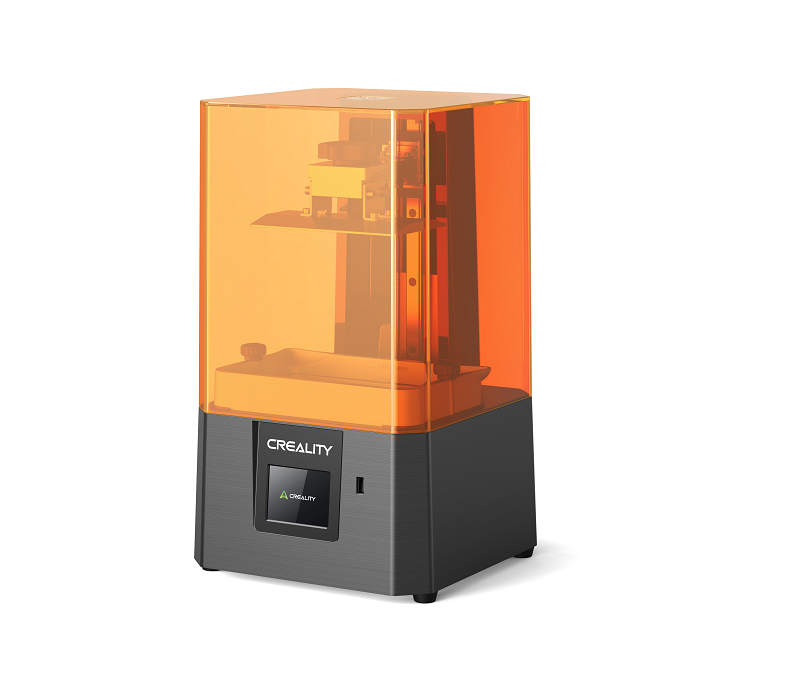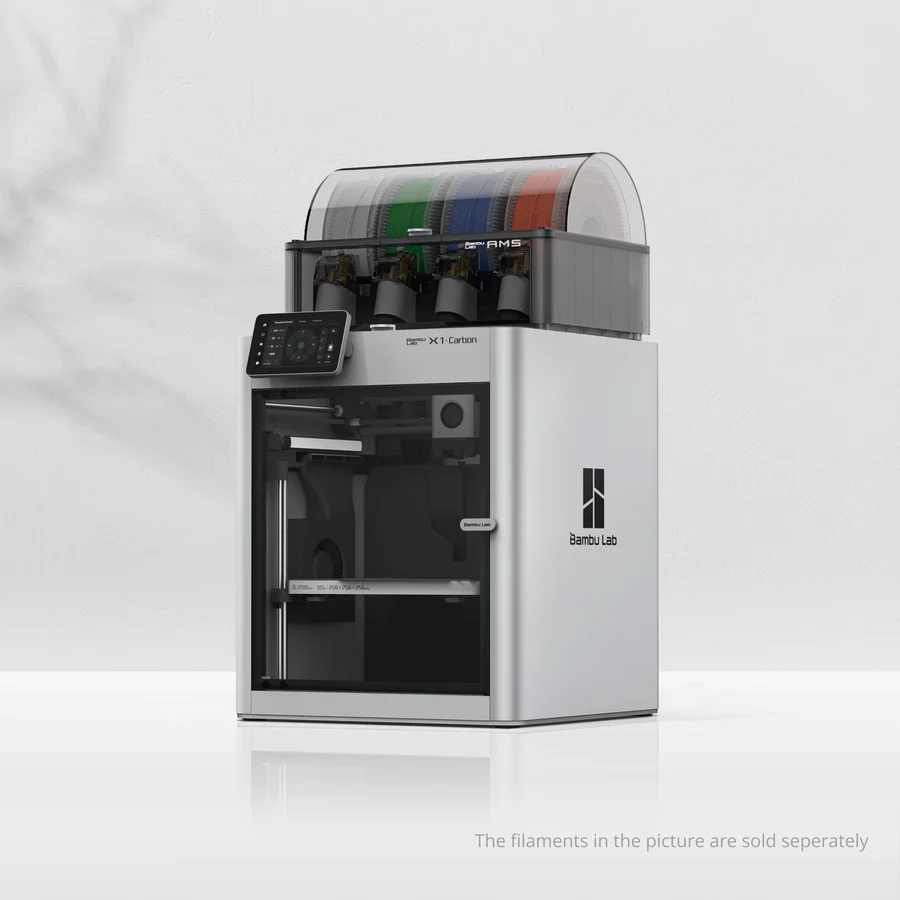Compare Halot R6 vs X1 carbon
Comparison between the best 3D printers
Choose the best 3D printer at the best price. The cheapest 3D printers are here.
Buy a 3D printer here with 3D Fila.
 |
 |
|
| Model | Halot R6[BUY Halot R6] |
X1 carbon |
| Printing Material | Resin | Filament |
| Buy Resin for Creality Halot R6 | Buy Filament forBambu Lab X1 carbon | |
| Estimated price | $129,00 | $1449,00 |
| Manufacturer | Creality | Bambu Lab |
| Release Year | 2024 | 2023 |
| Print Volume [mm] | 130x82x160 | 256x256x256 |
| Printer Size [mm] | 235x230x395 | 389x389x457 |
| Weight [kg] | 5,8 | 14,13 |
| Power Loss Recovery | NO | YES |
| Maximum Resolution [mm] | 0,01 | 0,1 |
| Processor | Quad ARM A7 1.2 GHz | |
| Display | Touchscreen 2,8'' | Touchscreen 5'' |
| Power Supply | 42W | 350 W |
| Connectivity | USB drive, WiFi | Wifi, Bambu bus, Cartão SD |
| Operating systems | Windows, Mac | Windows, Linux, Macbook |
| Date of registration in the system | 2024-12-05 | 2024-04-10 |
| Release date | 2024 | 2023 |
| Extra features | The Creality Halot R6 offers high precision with a layer height of 0.01-0.2 mm, a printing speed of 60 mm/h, and an integral light source with over 90% uniformity. Compact and lightweight, it features a 6.08" monochrome LCD for faster curing and extended durability. Includes Wi-Fi connectivity via Creality Cloud, an intuitive touchscreen interface, and supports remote monitoring and timelapse recording with a USB camera. Ideal for beginners, its robust and user-friendly. | The Bambu Lab X1 Carbon revolutionizes 3D printing with stunning design, high print speeds, and a streamlined user experience. It stands out with its CoreXY system, a hotend capable of reaching 300°C, allowing for a wide range of filaments. Its LiDAR-assisted bed leveling system, vibration compensation, and AMS multicolor printing capability raise the industry standard. Print quality is impressive, with the ability to fine-tune for perfection. The X1 Carbon, with its closed build volume, not only promises but also delivers one of the most advanced 3D printing experiences available to consumers. |
| Support for multiple colors and materials (AMS and CFS) | NO | YES |
Notes * |
||
| Cost-benefit | 9 / 10 | 7 / 10 |
| Hardware | 9 / 10 | 6.4 / 10 |
| Tela | . | . |
| Print volume | 3 / 10 | 4 / 10 |
| Performance | 9 / 10 | 4 / 10 |
| [BUY Halot R6] |
Conclusion |
| In comparing the Creality Halot R6 and the Bambu Lab X1 Carbon, several key factors highlight the strengths and weaknesses of each 3D printer, ultimately guiding prospective buyers in their decision-making process. Firstly, from a financial perspective, the Halot R6 offers a significantly lower price point, making it an attractive option for budget-conscious consumers or those who are new to 3D printing. This affordability does not compromise quality, as evidenced by its high precision, fast curing with the monochrome LCD, and user-friendly features tailored for beginners. Conversely, the Bambu Lab X1 Carbon commands a premium price but justifies this with advanced features and capabilities. It excels in high print speeds, a versatile hotend for various filaments, and sophisticated technology like LiDAR-assisted leveling and multicolor printing. These features may appeal more to experienced users or professional applications where performance and versatility are paramount. In terms of print volume and connectivity, the X1 Carbon offers larger dimensions and multiple connectivity options that enhance its functionality. However, the Halot R6 shines in being compact and lightweight, facilitating easier storage and transport. While both printers exhibit strong performance and quality in their respective niches, the choice ultimately hinges on the user’s priorities. For those seeking a reliable and cost-effective entry into 3D printing, the Halot R6 stands out with its exceptional cost-benefit ratio. For users requiring advanced features and broader filament compatibility for complex projects, the Bambu Lab X1 Carbon is worth the investment. In summary, the Halot R6 is ideal for cost-sensitive beginners or hobbyists, while the X1 Carbon serves professionals or enthusiasts ready to leverage cutting-edge technology for demanding printing tasks. Choosing between them involves weighing the importance of budget against the need for advanced functionality and superior performance. |

